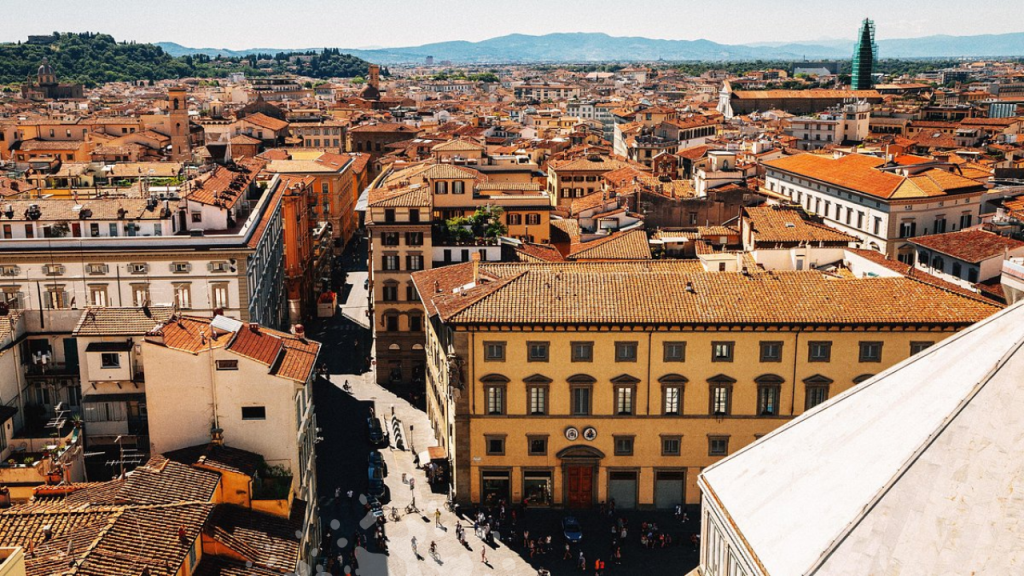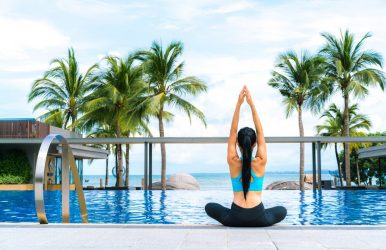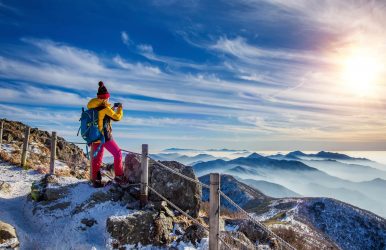What Are The Suva Fiji Hidden Gems? Know The Underrated Places To Visit In Suva Fuji For Cultural Travelers
BY
Sibashree
Oct 24, 2025
I was standing near the mouth of the Rewa River to the east of the city. I was looking at the mangrove trees and how the villages nearby woke up with the first rays of the Sun touching the earth. People were busy collecting firewood, and some had already sailed in search of fish.
Despite having such a distinct livelihood in Fiji, it also takes inspiration from multiple cultures and ethnicities. So, Fiji is said to have a culture of fruit salads. You will find people of Indian, Samoan, Micronesian, Solomon Island, Chinese, and Rotuman origins.
Furthermore, Fiji, fondly called Mini India, has taken another step to strengthen the connection. The Indian ship Kadmatt reached Suva in September 2025, and there have been ongoing discussions about maritime collaboration between the two countries.
With so many cultural aspects to explore, Suva, Fiji, also has many offbeat destinations. Here, we will discuss the Suva Fiji hidden gems, local cultural experiences, the nightlife, art scene, and more!
Local Cultural Experience In Suva, Fiji: Know The Suva Fiji Hidden Gems
I was at the Suva Curio Handicraft Center in Suva’s CBD area. I found the most amazing Fijian handicrafts and carvings.
The woven mats were beautiful. Furthermore, the wood earrings and necklaces, and the traditional Fijian clothes, or Tapa, caught my attention. However, these were not just souvenirs. Packed with symbolism, those told stories of Fijian traditions and Fijian families.
Along with this handicraft center, I also explored the Namosi Highlands, attended local storytelling events, and customs.
1. Village Visits And Attending Traditional Ceremonies
My cultural exploration in Suva, Fiji, started with Namosi Highlands. As I reached there, the villagers welcomed me with the Sevusevu custom. My guide has already told me. So, I carried some powdered kava root and handed it over to the chief, requesting an entrance to the village.
Then, I attended the vibrant meke dance performance. The male and female dancers in the performance depicted many historical and ancient legends.
Furthermore, the village chief asked me to be a part of the underground feast, or the Lovo. Here, the vegetables and meat were cooked in the ground using white-hot stones. I experienced the true magic of slow cooking there.
2. Kava Rituals Or Storytelling Events
View this post on Instagram A post shared by Lomani Island Resort & Spa (@lomaniisland)
A visit to Suva’s Cultural Center is another deep cultural encounter I had in Suva, Fiji. The elders here tell stories of Fijian values and myths. Thus, the oral tradition of storytelling remains alive in Fiji.
3. The Local Festivals In Suva, Fiji
View this post on Instagram A post shared by Fiji Sun (@fiji_sun)
Music, food, religious ceremonies, community celebrations! The festivals in Suva, Fiji, are vibrant, and they give insights into the multicultural nature of the place. Here is a brief calendar of the major festivals in Suva, Fiji, with their timings.
Major Festivals in Suva, FijiTimingHibiscus FestivalAugustSouth Indian Fire Walking FestivalJuly-AugustDiwaliOctober-NovemberFiji Day:10th OctoberEasterGood Friday, Easter Sunday, and Easter Monday
4. Art & Creative Spaces In Suva Fiji
View this post on Instagram A post shared by FIJI MUSEUM (@fijimuseum)
There are many underrated places to visit in Suva Fiji, for cultural travelers. For example, the Fiji Museum Art Annex shows the work of the local artisans on a rotational basis.
Furthermore, the Veiqia Project Studio is a space to showcase the work of the indigenous women artists and tattoo traditions.
5. Street Art & Artisan Workshops
View this post on Instagram A post shared by Asia Pacific Region Crafts (@worldcraftscouncil_asiapacific)
I enjoyed a walk along Victoria Parade and saw the Fijian legends come to life through beautiful murals. Furthermore, if you want to learn the art of pottery and weaving, you can visit the Makoi Women’s Handicraft Centre.
6. Nightlife & Entertainment In Suva Fiji
Traps Bar and O’Reilly’s became my favorite nighttime destinations in Suva, Fiji. They had amazing reggae music and the island jazz performances.
Also, the Fijian folk music and dance at O’Reilly’s was the biggest highlight.
7. Cultural Performances At Night
The Pacific Cultural Nights at the Civic Centre were brilliant. These performances included fire shows, storytelling, and fire dance.
8. Food And The Hidden Eateries In Suva, Fiji
View this post on Instagram A post shared by Robinson Crusoe Island Fiji (@robinsoncrusoeislandfiji)
I was bowled over by the Lovo feast at Namosi Highlands. Food in Fini is flavorful, and the culinary scene here is a wonderful fusion of local produce and multicultural culinary influences. Furthermore, the use of exotic tropical fruits adds the right amount of zest to the dishes.
Nevertheless, during my last visit to Suva, Fiji, I had a great time at these cafes and eateries. Café Thirty-One, just behind the Suva Library, made my day with the best coconut latte and banana bread.
My guide also took me to the Greenhouse Café, a vegan-friendly restaurant, serving amazing smoothie bowls made from local fruits. I loved the garden seating there.
However, if you want to try Fijian fusion cuisine and enjoy live music, you must visit the Bad Dog Café. Moreover, Cloud 9 Lounge is an ideal spot for sunset lounging and partying.
9. Suva Municipal Market
View this post on Instagram A post shared by Phil Sami (@philsami)
Suva Municipal Market, built in the 1950s, is the biggest market in the country. On a busy day, the market accommodates around 3500 vendors, and it is the best place to buy local specialties such as breadfruit, taro, and tapioca.
There is also a dedicated section for seafood and mussels. However, you must visit the market in the early hours. In the late hours, the market is rushed.
10. Take A walking Anti-Tour Of Suva, Fiji
If you want to experience Suva beyond the typical “Bula”- fied version, you can join the “anti tour” walk of Peter Sipeli, a poet, LGBTQ+ activist, and cultural guide.
The tour he conducts is critical, and it does not match the glossy vibe of Fiji. Coming out as gay at the age of 17 and fighting for his rights after his return to Suva has given him enough stories to add layers of anecdotes and humor to this walking tour experience.
He conducts the tour through the city streets and the bustling markets so that you can see the beauty and inequality simultaneously.
Family-Friendly Hidden Gems In Suva, Fiji
View this post on Instagram A post shared by Jessy (@rocketjess)
Suva Botanical Gardens and the Fiji Museum are two family-friendly hidden gems in Suva. The Botanical Gardens have easy hiking trails and are ideal for relaxing picnics.
On the other hand, the Fiji Museum's interactive exhibits are ideal for children and adults alike.
Suva Municipal Market in the early hours can be another family-friendly location for accessibility. It has wide aisles and ramps.
Seasonal Hidden Gems In Suva, Fiji
View this post on Instagram A post shared by Nicole Golonka (@nicole.golonka)
The dry and wet seasons in Suva, Fiji, give you the chance to explore the following hidden gems.
May to October, or the dry season, is ideal for hiking in Colo-i-Suva Forest Reserve and attending festivals such as the Hibiscus Festival, Fiji Day, and Diwali.
On the other hand, the wet season from November to April is ideal for visiting the lush forests and waterfalls and taking photographs.
Here is a breakdown of seasonal hidden gems in Fiji.
MonthsSuitable Activities January-February• Rainforest Hikes• Waterfall ToursMarch-April• Kava Rituals• Cultural WorkshopsMay-June• Hiking• Art FestivalsJuly-August• Hibiscus Festival• Street ParadeSeptember-October• Snorkeling• Staying in Eco LodgesNovember-December• Diwali• Christmas• Easter
Adventure & Sports Activities in Suva, Fiji
Explore these lesser-known spots in Suva, Fiji, and try adventure activities such as kayaking, snorkeling, and advanced biking.
ActivitiesLocations• Kayaking with Mangrove ViewsLami Bay• Vibrant coral reef• SnorkelingNausori Reef• Colo-i-Suva TrailsAdvanced biking through rainforest terrains
Offbeat Shopping Experiences In Suva, Fiji
View this post on Instagram A post shared by Guided Walks Suva (@guided_tours_fiji)
Suva Handicraft Centre is the best place for authentic masi (tapa cloth), wood carvings, and woven baskets. Furthermore, TappooCity Suva is home to local designers such as Rako Designs and KuiViti.
Furthermore, you will find ethically sourced jewelry and crafts in Suva.
Suva Fiji Hidden Gems Associated With Mythical Stories And Folklore
View this post on Instagram A post shared by Mai TV Fiji (@maitvfiji)
Ratu Sukuna Park is a popular place in Suva, associated with mythical stories. The park is said to be protected by ancestral spirits.
Mount Korobaba is another place that was once a tribal outpost. Hiking to Mount Korobaba, the tallest mountain in Fiji (422 meters), is quite challenging due to its steep trails. However, the view from the top is rewarding.
Furthermore, you can ask your guide to coordinate a Suva ghost walk. There is no official ghost tour in the city. So, this tour will take you to places associated with mysteries or supernatural incidents.
Top Tourist Places You Should Avoid In Suva, Fiji (And Where To Go Instead)
When it’s about the hidden gems, the touristy and “popular” spots are sheer disappointments. Also, you don’t want to waste your money, time, and resources visiting an overcrowded place.
Here are the tourist places you should avoid and their alternatives.
1. Suva Flea Market
View this post on Instagram A post shared by The Journey FJ (@thejourneyfj)
Suva Flea Market is often overcrowded. Thus, it often fails to offer the cultural shopping experience it promises. You will find mass-produced souvenirs here, and the inflated prices for tourists are a big turn-off.
You will get so busy bargaining that you will not notice anything taking place around you.
Makoi Women’s Handicraft Centre is a quieter, community-run space offering authentic, handmade crafts with fair pricing and cultural storytelling.
2. Colo-i-Suva Forest Park (Unguided)
View this post on Instagram A post shared by Mike Duin (@mike_duin)
Colo-i-Suva Forest Park has reported incidents of theft and assault on unguided trails. So, solo trips and late visits are risky here.
Get in touch with eco-certified guides for safety and provide cultural insights into the flora and fauna.
3. Victoria Parade At Night
Victoria Parade is a popular nightlife strip. However, it can become unsafe after sundown due to petty crime, intoxicated crowds, and occasional scams targeting tourists.
Cloud 9 Lounge or Traps Bar offers a more secure, well-managed nightlife with live music and local cocktails.
4. Suva Municipal Market (Late Hours)
View this post on Instagram A post shared by DJKiwi (@djkiwinz)
In the late afternoon, the Suva Municipal Market gets overcrowded. So, there are risks of overcrowding and overpricing.
Visit the market early in the morning and take a local guide with you to know where to shop safely.
Practices To Avoid While Exploring The Hidden Gems In Suva, Fiji
Here are some more dos and don’ts while visiting Suva, Fiji.
Things to AvoidAlternativesTaking unlicensed taxi servicesHotel-booked or metered taxisOverpacked itinerariesFocus on 2–3 meaningful experiences per dayOver-negotiating at local shopsVisit fair trade shops such as Handmade Fiji and TappooCity Suva. Ignoring cultural etiquette at religious sitesJoin a cultural tour to learn about the spiritual and religious customs and beliefs of FijiMissing out Fiji’s rich culinary heritage and local food Try Kokoda, Lovo, and Roti Parcels
Eco-Friendly Accommodations In Suva, Fiji
Colo-i-Suva Eco Lodge: Nestled in the rainforest, this lodge uses solar power and rainwater harvesting.
Rainforest Eco Retreat: Offers guided nature walks and supports local conservation efforts.
Sustainable Travel Practices
Use reusable water bottles and support community-based tourism.
Choose locally owned transport services and farm-to-table eateries.
A Hidden Gem Itinerary For Suva, Fiji
View this post on Instagram A post shared by FIJI MUSEUM (@fijimuseum)
Here are flexible 1, 3, and 5-day itineraries for exploring the hidden gems of Suva, Fiji.
Table 1: 1-Day Itinerary
MorningVisiting Suva Market & Café Thirty-OneAfternoonExploring Fiji Museum & Thurston Gardens (Suva Botanical Gardens)EveningAttending a kava ceremony at the Cultural Centre
Table 2: 3-Day Itinerary
Days Activities Day 1• Colo-i-Suva hike• Eco-lodge stayDay 2• Art gallery tour• Dinner at a rooftop barDay 3• Village visit• Storytelling night
Table 3: 5-Day Itinerary
Days Activities Day 1• Colo-i-Suva hike• Eco-lodge stayDay 2• Art gallery tour• Dinner at a rooftop barDay 3• Village visit• Storytelling nightDay 4• Snorkeling at Nausori Reef• Folklore tourDay 5• Shopping at TappooCity
A Budget Breakdown For Exploring Suva’s Hidden Gems
An average 3-day trip in Suva, Fiji, will cost around FJD 500–800 or $220-352. Here is a quick breakdown of the expenses.
CategoryCost (FJD)NotesAccommodation80-150 (Per Night)• Boutique Hotels• Eco LodgesFood30-60 (Per Day)• Markets• Local CafesTransport20-40 (Per Day)• Buses• TaxisActivities50-100• Tours• WorkshopsSouvenirs30-70• Handicrafts• Art
Travel Smart And Travel Deep: Exploring The Hidden Gems Of Suva, Fuji
Suva is a living museum of Fijian heritage, creativity, and community. Furthermore, it is a city of contrasts, with modern malls, colonial buildings, and bustling markets coexisting with serene gardens.
Furthermore, it is a melting ground of Indian, Chinese, Samoan, and other cultures. So, if you can keep your curiosity alive and respect the local culture, Suva will surprise you at every turn.
Suva Fiji Hidden Gems: Frequently Asked Questions (FAQs)
Here are the frequently asked questions and answers about Suva Fiji hidden gems.
1. Is It Safe To Walk Around Suva At Night? The crime level in Suva, Fiji, is moderate. According to Numbeo, the cost of living here is 58.60. However, the rate of crime increase in the last 5 years is 70.12, which is high. So, it is better to avoid walking in Suva at night. 2. Why Is Fiji Called Mini India? The British brough indentured laborers from India in the 19th and early 20th centuries for working in sugar plantations. They stayed here for generations and preserved the Indian culture. Furthermore, today, a significant population here comes from the Indian origin. So, Indian festivals such as Diwali are celebrated here with great pomp. 3. Where Does Oprah Stay In Fiji? The Laucala resort is a place frequented by the likes of Oprah Winfrey and George Clooney. Dietrich Mateschilz, the co-founder of Red Bull, has designed this resort.
Read Also:
How To Plan A Kotor Montenegro Budget Travel? Cheap Ways To Travel To Kotor Montenegro For Backpackers
Luang Prabang Travel Guide: Why I Loved It? (Activities, Attractions, History, Itinerary, And More)
Tucumán Argentina itinerary: What To See In The Smallest Province Of Argentina?














